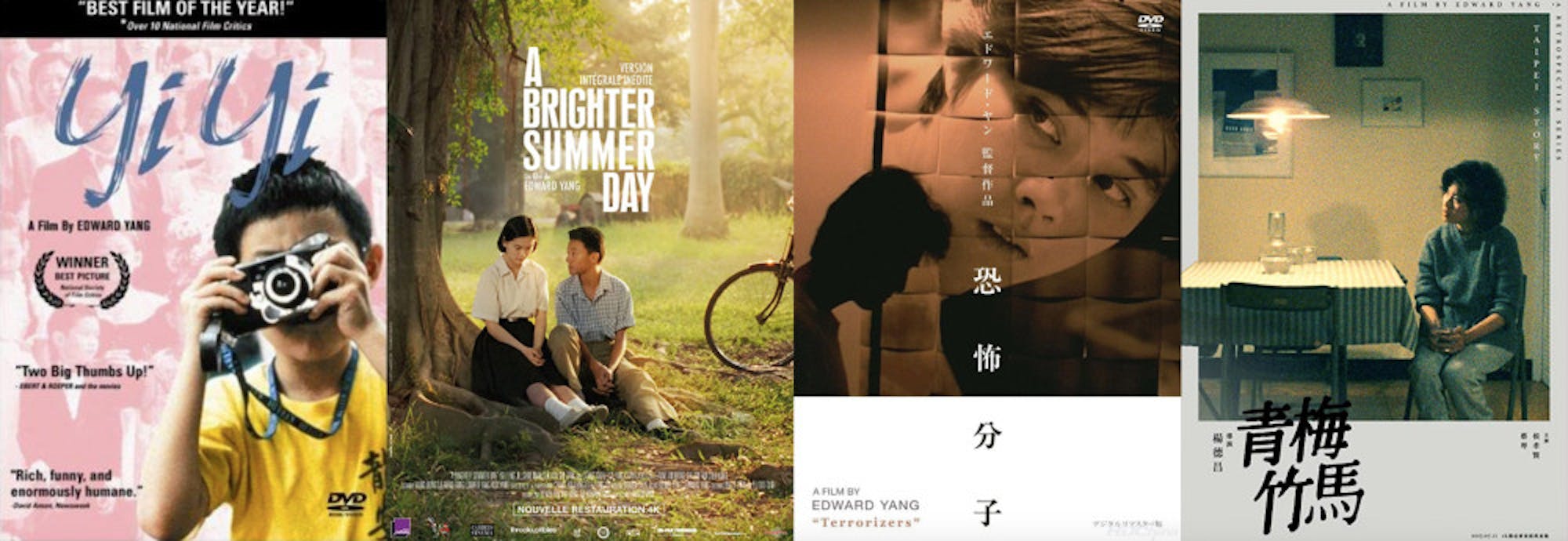Hailed as one of the trailblazers of the “Taiwanese New Wave,” the late Edward Yang’s films put the spotlight on a country underpinned by rapid economic growth, globalization, urbanization and political liberation. As a narrative artist, Yang’s genius lies in his portrayal of how these changes distill into every aspect of life. This article looks at four of his seven feature films, “Yi Yi” (2000), “A Brighter Summer Day” (1991), “Terrorizers” (1986) and “Taipei Story” (1985), in which Yang not only maps the socioeconomic changes in Taipei but also investigates concepts such as oppression, gender, violence and the nature of love. Ultimately, his examination of the antinomies of social class, the cycle of oppression and violence and the unattainability of ideal love doesn’t apply only to Taiwan but is universal.
Yang's films are permeated by a stiflingsense of loss and melancholy. Part of the trick is his frequent employment of wide and still shotsas well as the overall slowness of his narrative. The other reason is political and economic: In aninterview with the New Left Review, Yang stated that Taiwan in the 1980s experienced tremendous economicgrowth, especially in the technological sector. This also means that those who work in traditional industries, or don’t have the credentials to adapt to rapid modernity, are left behind. In “Terrorizers,” Li Lizhong (one of the most common Chinese names, so much so that it conveys mediocrity), a monotonous doctor,knows only to work harder in the hopes that his boss will someday recognize him. It is no surprise that he loses his wife, who is part of the emerging urbanite creative class, to a software entrepreneur.
In the interview,Yang explained that the two main characters of “Taipei Story” “represent the past and future of Taipei.” The protagonist, Lung, is someone who is left behind by the economic tide because he lacks the credentials for any career advancement, having spent his teenage years playing little league baseball for his city.Chin, the other protagonist and Lung’s lover since childhood, is only slightly better integrated into the new economic landscape, being reliant on a boss from the mainland. A rising tide doesn’t lift all boats. The lack of upward mobility for people who lack the skills most convenient for their times and, especially for males, a traditional sense of masculinity that ascribe a man’s worth to his career success together create desperate individuals. This is exemplified by Li and Lung, who fail to see better lives for themselves while their acquaintances, those who are more willing to acquiesce and follow the trend, get ahead.
The married couple in “Yi Yi” also experiences middle-age inertia but for slightly different reasons. NJ, looking to salvage his business,doesn’t want to sacrifice his integrity and be muddled in fraudulence for a business deal. When he is finally about to reach a deal with personal sincerity, he’s still one step behind his phony cousin and business partner. His wife Min-Min is worn out by the mundaneness of her white-collar job; more devastatingly, her mother is paralyzed and the doctor recommends the family to “talk to her” more. Yet Min-Min finds little in her ennui-infused urbanite life worthy enough to share with her mother and thus concludes that she has wasted her life, which prompts her to escape into a temple. With Min-Min gone, NJ seeks to rejuvenate his life by getting together with his teenage lover again. The couple, both members separately married, travels through the crowded streets of Tokyo and a quiescent temple, the shots of those scenes juxtaposed beautifully with NJ’s daughter Ting-Ting going on a date with her boyfriend. Yet NJ finds neither the opportunity to relive his teenage years nor the courage to love again.
“A Brighter Summer Day,” set in the 1960s, during which the Kuomintang dictatorship reigned supreme, features a more grand yet deterministic social fabric. Yang cogently establishes a multilayered web of oppression: from the state to the education system, from complexly structured gangs to the intricate entanglements between their members, from corrupt workplaces to domestic violence. The school is divided into gangs, whose influence few teenage boys can resist. The sadistic nature of the education system, along with the oppressive teachers and administrators it produces who in turn perpetuate the system, means that gang disputes are the only outlets through which a boy can exercise his masculinity and find a sense of belonging. The protagonist, Si’r, has no viable alternative but to partake in the toxic culture — until he starts enjoying it, having made progress with the gang leader’s girl, Ming.
What makes the school gangs, their interwoven hierarchies and the loyalty and betrayal among their teen and 20-year-old members gripping and convincing is that the film demonstrates to us that they don’t have a way out: not through the brutal education system, not through the traditional parents who were raised in the same way. But in many senses, Si’r, his father and NJ from “Yi Yi” are similar, in that while they are not born rebels, they are too pure for the world around them. While they swim in an environment hostile to them, they have to maintain their own sense of integrity and expect people they love to do the same. Yet all they face are rejection and disappointment because the system doesn’t permit dissent.
All four films discussed in this article end with a grotesque act of violence, though the murder in “Yi Yi” is the least pronounced and the double ending of “Terrorizers” warrants a deeper viewing. The motives behind those actions are all clearly established: depressed individuals who fail to see a way out, not through a career, not through school and not through love. Yet much of the same can be said of the victims. Yang’s display of murder, however subtle like the one in “Yi Yi,” is the perfect culmination of his tragedy because everything builds up to it, yet it ultimately achieves little and only takes away the life of another victim of the deterministic social fabric Yang establishes. The killings are futile.
And the teenage love so prevalent in Yang’s films? All four films feature teenage couples or adults getting together with their first love. In the latter case, the characters are disenchanted by adulthood and the rapid change of the world around them. Boats against the current of modernity, they ceaselessly seek to live their lives backward and retrograde into a simpler, more innocent time. The teenage lovers in Yang’s films are anxiously seeking the fruit of love but also get a glimpse of the disenchantment.






